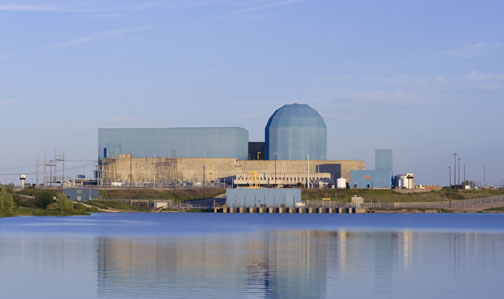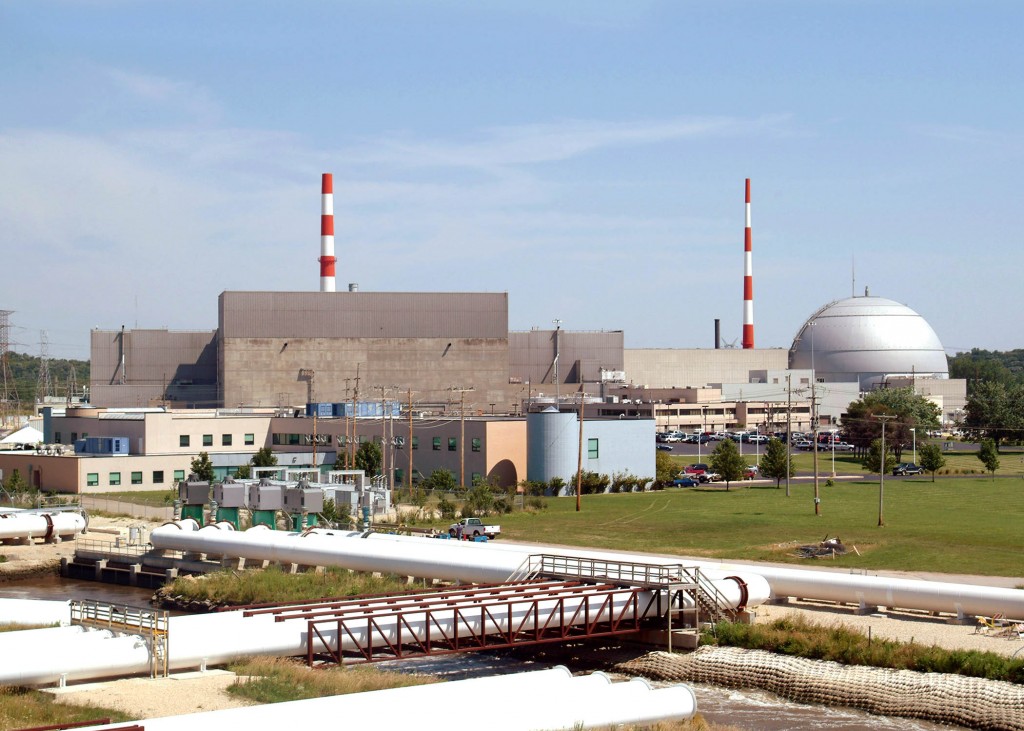Illinois Nuclear Plants - At Risk?
The shutdowns of Kewaunee and Vermont Yankee, two single-unit nuclear generating stations in unregulated markets, have brought to focus the economic realities of nuclear power stations in an ever-changing world. These plants date from an age where government subsidy did not permit renewable assets like wind and solar to make money, even when bidding onto the grid at near zero prices.
We have seen the effects, at least initially, of the shutdown of Vermont Yankee. The effects are, and were, easy enough to predict. In some cases, the negative effects on the communities may not be something that would spur these communities to work to save these plants.
Throughout the United States, Illinois currently has the most reason to worry over the potential shutdown of nuclear plants, all for economic reasons. The Prairie State has six nuclear power stations (Braidwood, Byron, Clinton, Dresden, LaSalle, and Quad Cities), five of which have two reactors each, while Clinton is a single unit. Together they generate 90 billion kilowatt hours per year. Clearly, the contribution in raw generating power (even considering that Illinois generally exports power) is enormous. Cutting some or all of this would have serious effects, but just how serious?
In order to find out, the Illinois General Assembly passed House Resolution 1146 compelling the Illinois Commerce Commission (ICC), the Illinois Power Agency (IPA), the Illinois Environmental Protection Agency (EPA), and the Illinois Department of Commerce and Economic Opportunity to investigate the ramifications. Their aggregate report totals more than 260 pages; below are some of the most significant points.
Illinois Commerce Commission
The ICC indicates that while the nuclear plants in Illinois account for only some 24 percent of the total "nameplate rating" of electric plants, they actually contribute more megawatt-hours of power than all of the coal and natural gas plants combined; this is because these plants are operated as base-load plants and run continuously. The direct implication of this, of course, is that removal of one or more would likely increase the cost of electricity, since the replacement would be by a source with more volatile fuel prices like natural gas.
In fact, the possibility is made clear by the ICC that Exelon, operator of the Illinois nuclear plants, could conceivably benefit from the shutdown of one plant-the report coming right out and saying that closing one plant might make the wholesale price of power go up enough that all its other nuclear plants might become profitable. It is worth noting that the only single unit nuclear plant is Clinton-a plant that has long been on the "short list" of plants thought to be threatened by closure for economic reasons.
Many factors are at play here and the situation is exceedingly complicated; for example, the addition of, or the upgrading of, transmission lines may allow some nuclear plants in Illinois (Byron, Quad Cities) to become profitable again. Analysis for the ICC by the grid operator PJM found that effects of closure will vary by plant and region (Clinton would affect the Ameren Illinois areas most, and the ComEd zone least), and that the price of power overall by closure of any single plant would increase between .3 percent and 6.8 percent. Even more troubling is the finding that "significant thermal and voltage violations" would result on the grids of seven grid operators (not all in Illinois) with the shutdown of various potential combinations of plants. Simply stated: Price goes up and reliability goes down. Potential cost could be in the "hundreds of millions of dollars" to make up for the various monies involved in loss of one to three nuclear units.

Clinton Power Station, courtesy Exelon
Illinois Power Agency
The IPA notes in its report that Exelon itself has consistently called out three of its nuclear plants in Illinois as being the high-risk for early closure: Byron, Quad Cities, and Clinton. As a result, it performed four case studies (no change; retirement of these three; retirement of these three plus a "polar vortex" type weather event; and retirement of these three coupled with higher-than-presently-expected system load coupled with rapid coal plant retirements.) The results are complex and affect different areas, but the bottom line of this agency's report is that only in the extreme case, when demand response resources (the ability to get large users to reduce load voluntarily) are not available, is grid reliability seriously threatened in any areas studied-an apparent contradiction to some of the findings of the ICC.
Illinois Environmental Protection Agency
The Illinois EPA's study focused pretty much on one theme: The social impact of carbon emissions in the wake of potential nuclear plant retirements. The Societal Cost of Carbon (SCC) was calculated for a variety of scenarios: closure of a single plant and replacement by the present non-nuclear energy mix (cost of $3.7 billion for emissions 2020-2029), the closure of two cost $10.3 billion, and the closure of three cost $18.6 billion over the same time frame. A fourth scenario considered closure of one plant but replacement by energy sources meeting the 2020 Clean Power Plan requirements; this scenario's SCC was only $2.5 billion. Illinois EPA notes that "the total SCC associated with nuclear plant closures is dependent upon the timing and amount of generation retired, and the carbon intensity of the mix of generation sources that replace lost nuclear generation."
Illinois Department of Commerce and Economic Opportunity
This Illinois department's report focuses on the fact that Illinois has an enormous component of its electric generating capacity fueled by coal (43 percent of capacity) and that Illinois has "the largest reserves of bituminous coal in the U.S." Further, the report tells us that Illinois is underlaid with vast amounts of geologic structure shown to be effective in sequestering stored carbon for eons. Thus, while this agency finds that there would be significant negative (short term) economic impacts from the closure of nuclear plants, these effects could be mitigated somewhat by 2019 through creation of clean energy jobs and reduction in wholesale energy prices that could result from "clean energy." The agency's report can be summed up as follows, from page 145 of the report:
"The primary economic impacts related to the potential retirement of Illinois' at-risk nuclear assets are significant. However, much of the immediate negative economic impact can be mitigated through a concerted initiative to fully-develop all economically viable energy efficiency and potential wind and solar resources."
The Result
In the grand scheme, it would appear that ICC has found that closure of even one nuclear plant could have serious effects on the grid in terms of reliability, although closure of just one unit might allow the rest to become profitable. The IPA contradicts this finding of reliability in most cases except for wide retirements coupled with wide coal retirements as well. Illinois EPA finds the SCC (when one or more plants is closed) to be always on the order of billions of dollars. Finally, the Illinois Department of Commerce and Economic Opportunity sees a green future, driven by solar, wind, and "efficiency assets," which have consumers turn off things when demand is high.
How this will all wash out in Illinois has yet to be seen. What is clear here is that numerous (and disagreeable) forces are at play in this adventure in policy making that will affect far more than just feeling good about energy. It will eventually (potentially) affect thousands of jobs-some lost, some gained-and billions of dollars-again, some lost, and maybe some gained.
The finale of the report is entitled "Market Based Solutions." We will analyze that portion of the report in the next installment of this two-part series.


